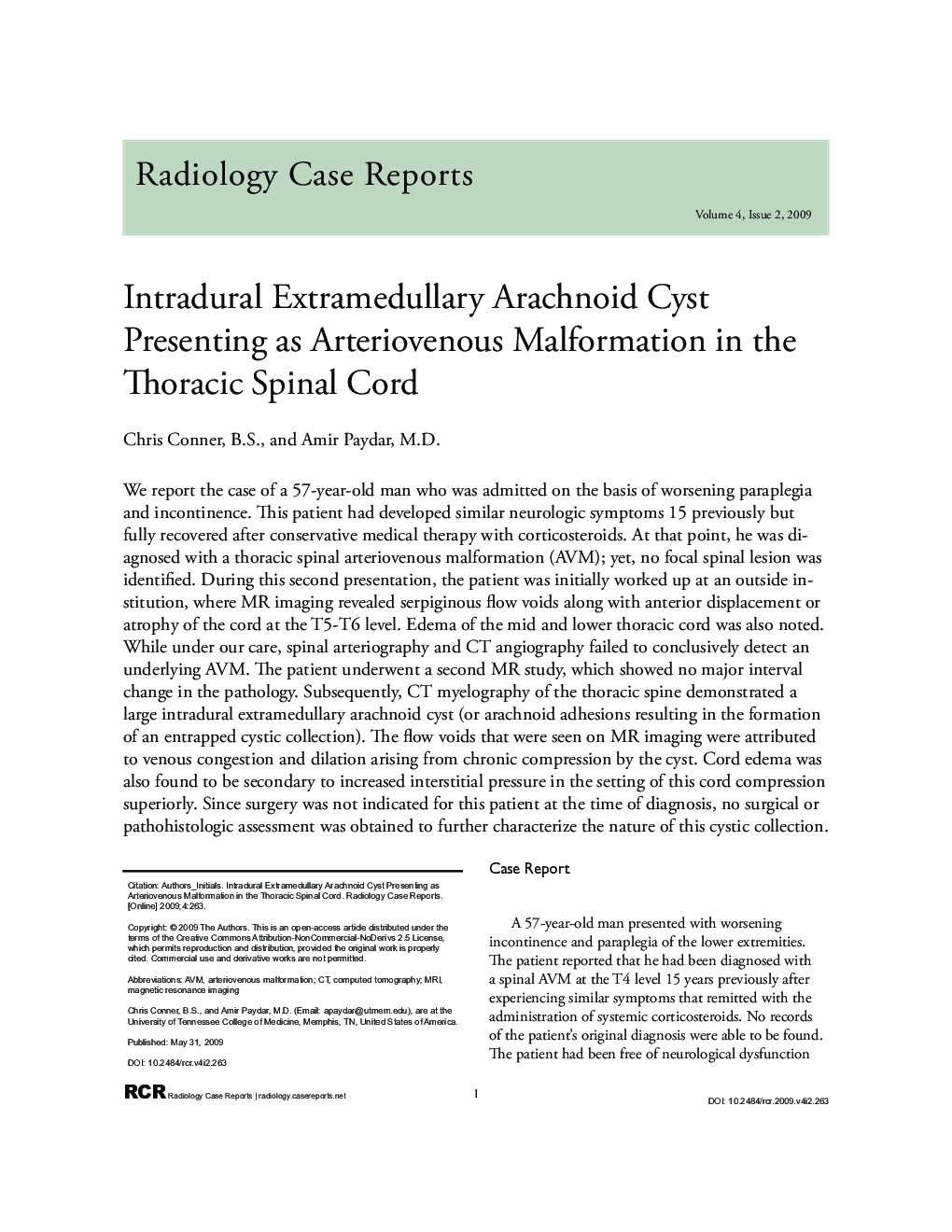| Article ID | Journal | Published Year | Pages | File Type |
|---|---|---|---|---|
| 4248215 | Radiology Case Reports | 2009 | 5 Pages |
Abstract
We report the case of a 57-year-old man who was admitted on the basis of worsening paraplegia and incontinence. This patient had developed similar neurologic symptoms 15 previously but fully recovered after conservative medical therapy with corticosteroids. At that point, he was diagnosed with a thoracic spinal arteriovenous malformation (AVM); yet, no focal spinal lesion was identified. During this second presentation, the patient was initially worked up at an outside institution, where MR imaging revealed serpiginous flow voids along with anterior displacement or atrophy of the cord at the T5-T6 level. Edema of the mid and lower thoracic cord was also noted. While under our care, spinal arteriography and CT angiography failed to conclusively detect an underlying AVM. The patient underwent a second MR study, which showed no major interval change in the pathology. Subsequently, CT myelography of the thoracic spine demonstrated a large intradural extramedullary arachnoid cyst (or arachnoid adhesions resulting in the formation of an entrapped cystic collection). The flow voids that were seen on MR imaging were attributed to venous congestion and dilation arising from chronic compression by the cyst. Cord edema was also found to be secondary to increased interstitial pressure in the setting of this cord compression superiorly. Since surgery was not indicated for this patient at the time of diagnosis, no surgical or pathohistologic assessment was obtained to further characterize the nature of this cystic collection.
Related Topics
Health Sciences
Medicine and Dentistry
Radiology and Imaging
Authors
Chris B.S., Amir M.D.,
